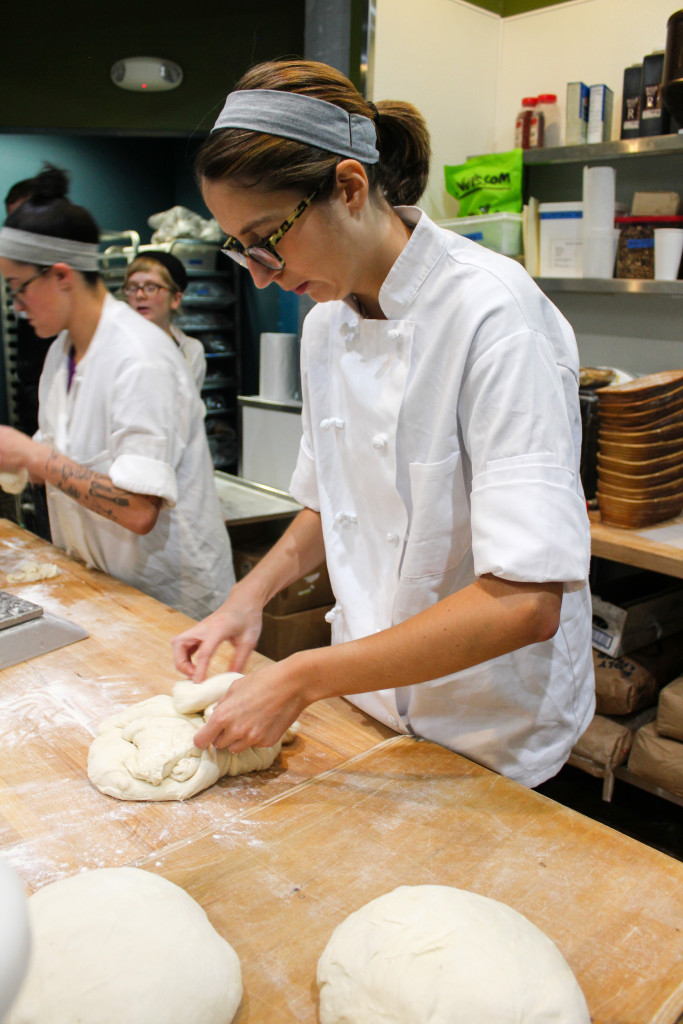From the Kitchen: a Fresh Perspective

Mix, stretch, pull, pre-shape, shape, proof, bake: the repeating, hours long cycle of making High Street on Market’s renowned bread. Deceptively simple procedures – mix according to recipe, roll dough balls – are complicated by daily variations in dough texture, quantities, and the intricacies required to properly shape each loaf. A dozen hours and 4 sets of hands translate to a few bites of chewy, crusty bread: it’s a strangely disproportionate relationship between the baker and the customer.
Warm, chewy, with a crunchy crust, a slice of a fresh loaf, or better yet, a jagged hunk ripped off a baguette, satisfies like none other. Bread is an integral part of many people’s lives. From the communal ritual of ‘breaking bread’ to oversized bread bowls filled with cheesy French onion soup, bread crops up in so many meals, both ordinary and extraordinary. Taking part in the many steps of bread making, part science, part craft, and part art, has given me a new appreciation for something I otherwise would have taken for granted.

“It’s not dead yet!” I was jokingly chastised on my first day. I was helping to shape hoagie loaves tightly into long, narrow rolls, which first required pounding out air bubbles and flattening the dough. A little overzealous with my pounding, I was reminded of one of the most integral aspects of bread dough: it’s alive. Beneath my flour-dusted hands was a warm ball teaming with life, the yeast active and producing the very pesky bubbles I was trying to temporarily vanquish. Dough’s live nature gives good bread its distinct depth of flavor, but also makes the entire process very time sensitive – each variety must be shaped and baked at precise intervals after its mixing, when the yeast activity inside, and thus the amount and size of bubbles, is just right. Every morning, shaping dough is thus carefully choreographed, multiple timers always ringing around the small bread room, signaling it’s time to mix, shape, or bake off one of more than two dozen doughs. Although the timers serve as an approximate measure of readiness, everything must always also be evaluated by hand. Sink your fingers into dough an hour, then three, off the mixer and it should feel very different: warmer, firmer, with smaller air bubbles popping inside as you apply more pressure. While I’ve learned a few basic shaping techniques in the month I’ve worked on bread, developing a careful feel for the proper fermentation time of dough takes years.
Yet, the customer never sees the careful yet frantic work that made the glossy roll forming their indulgent breakfast sandwich. At your next brunch, savor those bites of soft brioche enveloping your fried egg and avocado, because it’ll take hours and many hands to create that same experience all over again.
Vera Kirillov
Photos by Danielle Pi